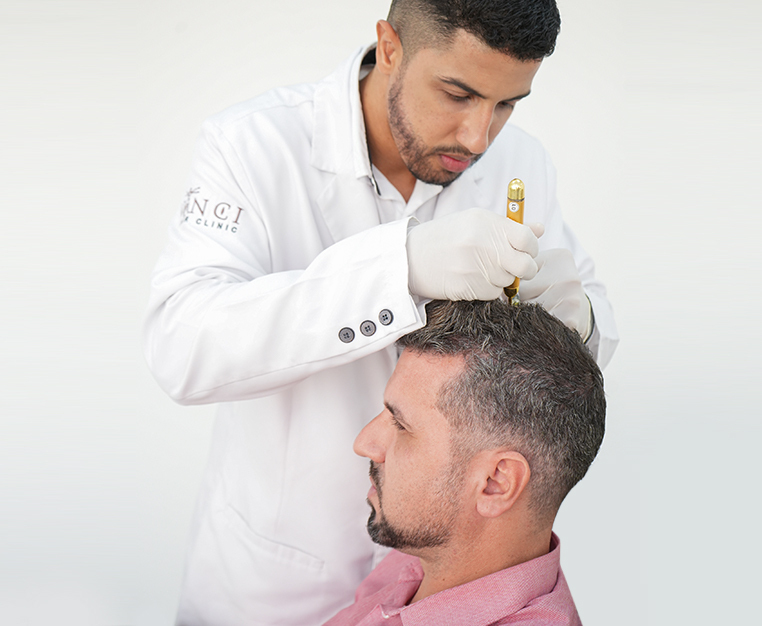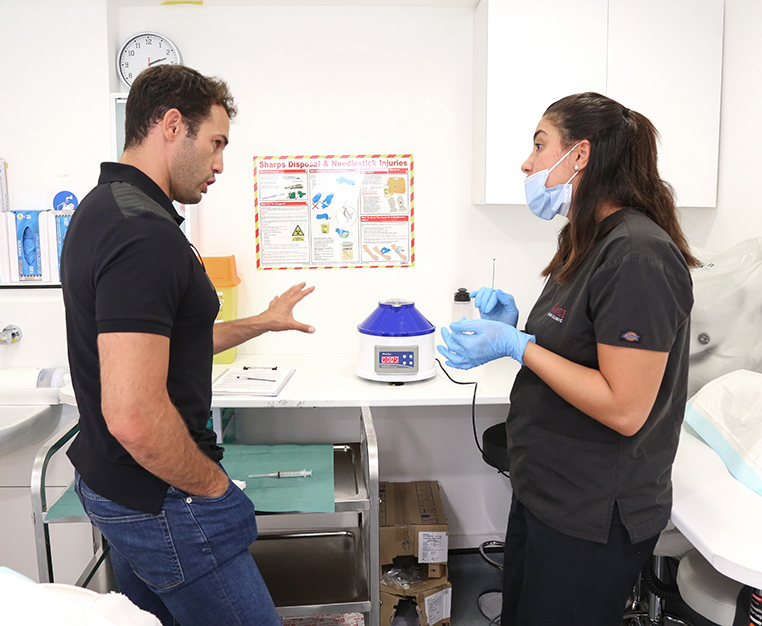This world’s obsession with hair is unreal. Whether you’re a celebrity, Joe or Jackie Bloggs, not having perfect hair can feel like a curse. Everywhere you look there’s an advert for volumising shampoo or a ‘miracle’ hair growth formula. If you’re unlucky enough to have receding hairline things may seem a bit daunting. Where do you go from here?
In this blog, we will dig into some of the causes of receding hairlines and offer you some solutions. You are not alone in this, and an answer to regrowing your hair might lie in these pages. Next, let’s start with the causes of receding hair and hair loss in general.
What Causes A Receding Hairline?
The top cause of hair loss and receding hairlines in men is male pattern baldness or androgenic alopecia. This one type of hair loss is responsible for the majority of balding and thinning heads on this planet. Of course, there are other causes, both temporary and permanent, but male pattern baldness takes the lion’s share of the scalps(excuse the pun).
The term pattern comes from the three distinct ‘patterns’ the balding takes. Hair loss starts from around the temples, crown or the mid-frontal parts of the scalp.
What Should I Watch Out For When It Comes Receding Hairlines
Hair loss takes different shapes, but in the case of a receding hairline, hair loss begins around the temples then gradually progresses backwards. Watch out for the infamous M shape, which is a classic symptom of pattern baldness.
For others, it’s the hair on the top of the head that starts going. The condition spreads in a radial pattern as the size of the bald patch expands.
How Do I Get A Diagnosis For A Receding Hairline Condition?
If you’re experiencing hair loss and some of the patterns mentioned above seem familiar, you must see a doctor. Only someone with experience can follow the correct diagnostic pathway to confirm whether you indeed have male pattern baldness or not.
Each of these three patterns progresses differently, but trained eyes will be able to distinguish it from other causes of hair loss. Once you have a diagnosis, you can begin treatment to stop or start regrowing lost hair.
What Treatments For A Receding Hairline AreThere
There is no cure for androgenic alopecia since it is a hereditary condition. However, do not lose hope and think there’s nothing you can do about a receding hairline.
Finasteride is a prescription drug specifically for male pattern baldness. It is the Food & Drug Administration (FDA) approved, and it comes in tablet form. It would be best if you took the tablet daily, and it will help to reduce hair loss. Over 90% of men who take the treatment report a reduction of hair loss and sometimes even new growth.
Finasteride can work even better if you use it in combination with an over the counter hair regrowth treatment Minoxidil. Minoxidil is a foam or lotion which you apply on the bald area. It stimulates an increase in blood flow to the scalp, nourishing hair follicles and encouraging new growth.
Note that Finasteride should be taken daily; otherwise, the hair loss will resume once the effects of the medicine wear off.
Hair Transplant For Receding Hairline
If you’re not too keen on the idea of taking medication for the rest of your life to keep your hair, perhaps a hair transplant is the answer for you. The most popular type of transplant surgery is follicular unit extraction (FUE). This procedure involves transplanting individual hair follicles from other areas of your scalp into the problem areas. It leaves little scarring and can offer a permanent solution to hair loss.
Advanced Trico Pigmentation is another potential treatment option if you want to keep your hair very short and create an appearance of closed cropped hair. The procedure involves the use of pigment to create the illusion of thicker hair or to build up a receding hairline.
Receding Hairline And Ageing
There is a close association between age and hairline, but this is not strictly true. Most men are well into their hair loss nightmare by the time they hit the 30s, but it’s not uncommon for guys in their 20s to suffer the condition.
Once the condition starts the rate of hair loss may change over time, but hair loss will continue for the rest of your life. Genetics plays a crucial role in determining when the hair loss starts, how fast it progresses and the cause itself. As far as ethnicity goes, Caucasian men appear more susceptible, while individuals from Afro-Caribbean backgrounds are four times less likely to have the condition.
Don’t Suffer In Silence.
Gone are the days when accepting the gifts from your ancestors without complaining (even if that meant you lost all your hair by the time you were twenty). Nowadays, male pattern baldness has treatment options to control the hair loss and sometimes even reverse it. Whether it’s Finasteride and Minoxidil combination or you choose to have a hair transplant, you now have a choice.
Vinci Hair Clinic specialises in helping men and women overcome hair loss. From giving you the correct diagnosing to helping find the best treatment for you, the specialist doctors have your interests at heart. Talk to someone today by booking a consultation at one of the 40 clinics worldwide.


